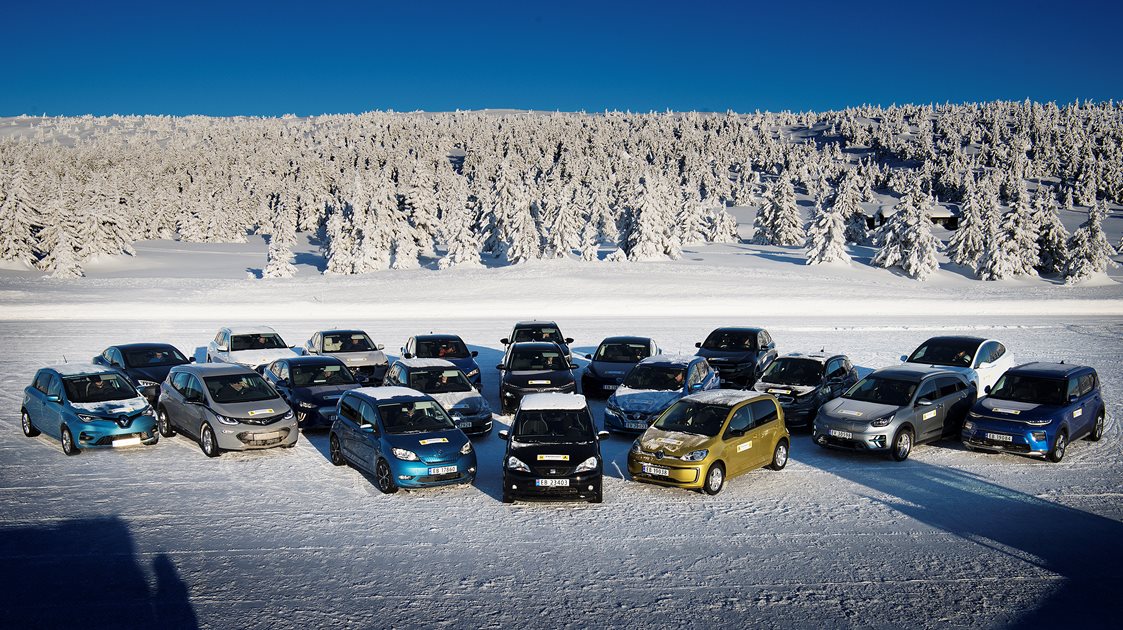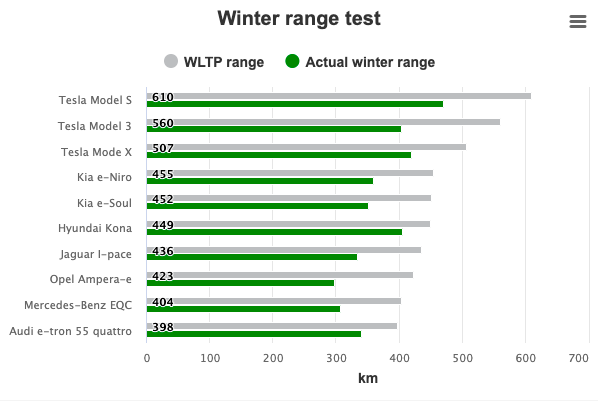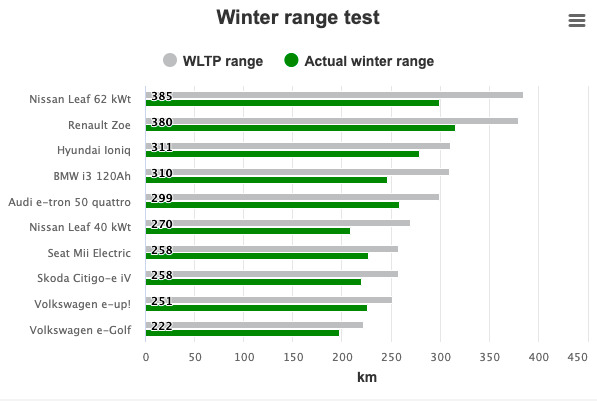EV’s and cold weather
In our China News of 7th February, we reported on the unfortunate experience of electric vehicle owners in China’s bitterly cold winters in its northern provinces. Some drivers have found their car’s range reduced by up to 40% when the temperature falls significantly below zero. As EV owners and enthusiasts, we wanted to find out more about this under-reported phenomenon.
The problem
“An electric car can only be driven properly for three quarters of a year, because it can hardly be used in winter,” a Beijing car owner said, “That’s equivalent to buying three quarters of the car.” So what is the experience elsewhere? Nordic countries and parts of Canada, for example, must experience similar winter conditions. How do they cope?
Electric vehicles are more reliable than internal combustion engines in terms of starting in the cold. Most electric vehicles use a 12-volt lead-acid battery to start the car. But starting an EV is much simpler and uses much less power than starting a fossil fuel car.
Consumer Reports works to ‘create a fair and just marketplace for all’. Here is what the report about EV’s operating in the cold says:
The lower the temperature, the more the range of the EV is reduced. The reduction becomes significantly greater below zero centigrade. A large part of this reduction, Consumer Reports finds, is because the driver needs to keep warm! Tips like using seat and steering wheel warming (as opposed to air heating) reduces the power needed.
But is this all there is to it? Clearly not. In my Volkswagen ID3, even if I turn off all internal heating, I still find the range is up to 20% lower in temperatures below five degrees centigrade. In colder climates, the reduction is even more. VW itself says:

The battery’s charge level also influences charging performance. Battery cells are designed to be more receptive when the charge level is lower. It is possible that the exact same car using the same charger could charge at different rates if one has significantly less battery power than the other. This means that if you charge only when the battery really needs it, your car will charge faster.
A comprehensive study in Norway
One of the most useful sources of data on the question is The Norwegian Automobile Federation (NAF). In 2020, they tested EV’s in extreme cold. They compared actual range of 20 of the best-selling EV’s in Norway with the Worldwide Harmonised Light Vehicles Test Procedure (WLTP). The EVs lost in average 18.5 percent of their range compared to their WLTP range.
The test focused on range, consumption and charging time. To test all the cars equally, the test drive was performed without preheating of neither cabin nor battery. All cars drove the same route on the same day, with similar style of driving, and climate control settings.


The test team also measured the rapid charge, focusing on effect and time. The test concludes that even if you do everything right and, it can still be difficult to get the battery warm before charging in wintertime, it will therefore charge slower than advertised.
The science
E&T (Engineering and Technology) writes:
So – there must be a problem with the lithium batteries themselves, rather than just how drivers use them.
When a lithium battery is being discharged, lithium ions travel from the graphite anode to the lithium cobalt oxide cathode via the movement of electrons through an external circuit. This process is reversed during charging. This electrochemical reaction slows down at low temperatures. Yet even this is not the whole story.
Researchers at the US Department of Energy’s SLAC National Accelerator Laboratory have shed light on how extreme cold can crack battery materials, degrading performance.
New technology will help. A 75kWh battery developed in China includes software that enables more accurate estimation of the battery’s state of charge to provide realistic information to drivers on the move. The battery is a hybrid in the sense that it combines two different lithium-ion technologies and so draws on the best characteristics of each. A special kind of heating system called a ‘radiant thermal compensation heater’ maintains the heat of the cells evenly to maintain the working temperature at the most efficient level. Volkswagen and Tesla are planning to utilise this technology
What to do
There are a few things EV drivers can do to gain an extra couple of miles out of their EV in winter. These include:
- Preheating – Also known as preconditioning, heating up the cabin and batteries BEFORE unplugging the car means drivers will have the best range possible because the car will not need to use power to get up to temperature.
- Eco Mode – although it will make the EV a little slower, driving in Eco mode will squeeze out a few extra miles. What is more, in snowy and icy conditions, the reduced urgency and torque will give you an advantage.
- Keeping the battery topped up – It is best to keep the battery topped up. However, charging the car when it is running low on battery makes charging quicker and helps increase battery longevity.
- Check your tyres. Tyres in cold weather lose about 2% of their air pressure for every five degrees C drop in temperature. This increases their rolling resistance and decreases efficiency.
- Slow down, especially on highways. EVs are less efficient at converting chemical to electrical energy at higher speeds than at lower speeds. On highways, you’re not only using more electricity—you’re using it less efficiently. And time and again – you get there just as fast. It’s the traffic that kills arrival times!
Finally – if all else fails and the EV comes to a complete stop. Do not despair! The Norwegians found that:
Now that is something worth remembering!
Worked on the article:

Wanlikhang





